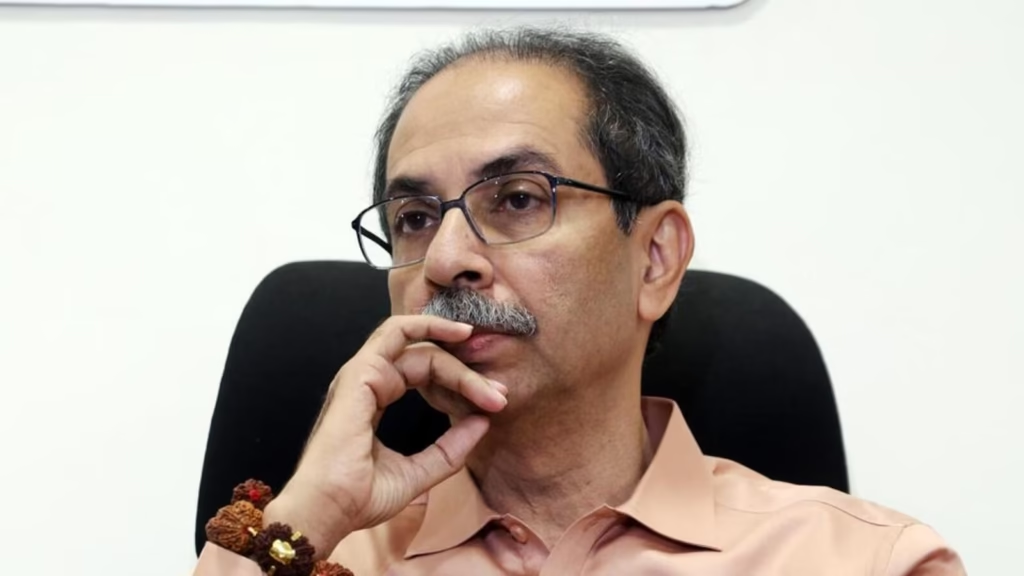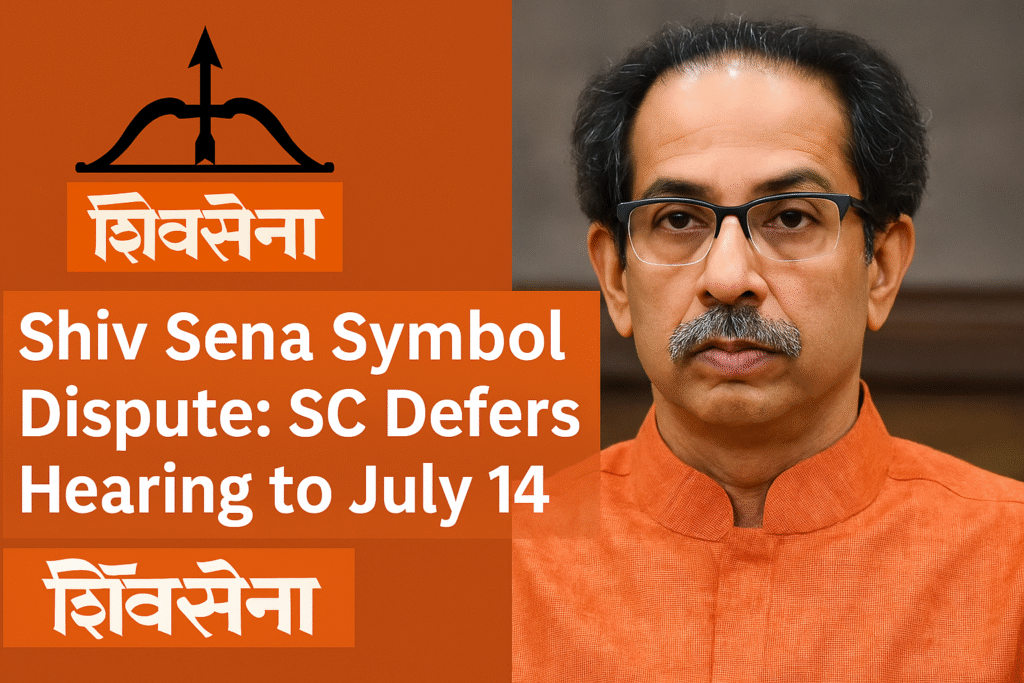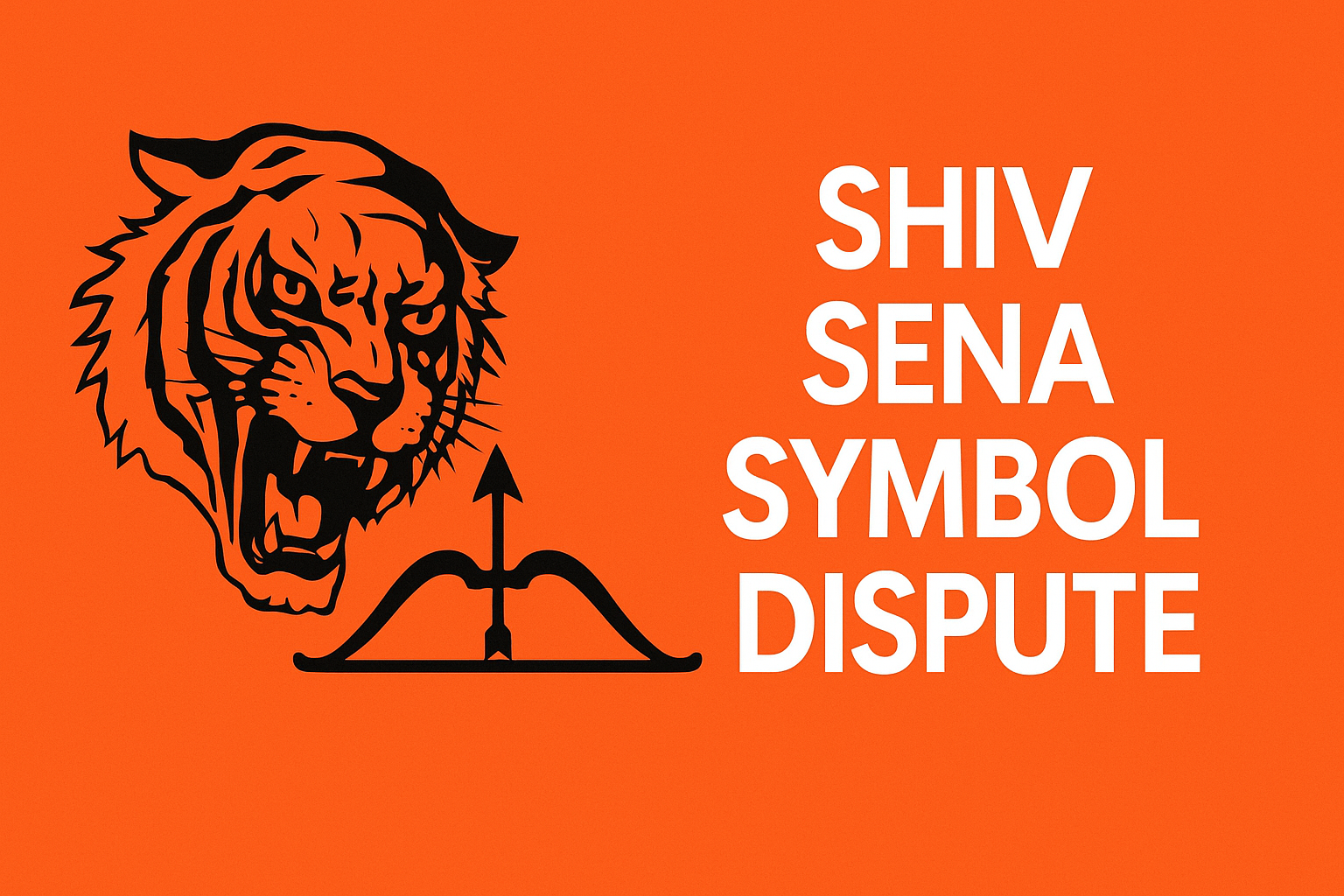In a fresh development in the Shiv Sena symbol dispute, the Supreme Court on July 2, 2025, rejected Uddhav Thackeray-led Shiv Sena (UBT)’s plea for an urgent hearing. The case pertains to the use of the Shiv Sena symbol the iconic bow and arrow and the party name ahead of the upcoming Maharashtra local bodies elections. A two-judge bench of Justices MM Sundresh and K Vinod Chandran has now scheduled the matter for July 14, citing that the election notification has not been issued yet.
The plea, filed as part of a pending petition, challenges the Election Commission of India’s (ECI) decision on February 17, 2023, recognizing the Eknath Shinde-led faction as the official Shiv Sena. According to senior advocate Devadatt Kamat, who appeared on behalf of Uddhav Thackeray, the issue is urgent as the polls for 27 municipal corporations, 232 municipal councils, and 125 nagar panchayats in Maharashtra will soon be notified. The Supreme Court had earlier, on May 6, directed the state government to complete local body elections within four months.
SC’s Response in the Shiv Sena Symbol Dispute
When asked to expedite the case, the bench observed there is no immediate urgency since elections have not yet been announced. The Court clarified that if elections are notified, the petitioner can still seek directions in the ongoing matter.

Kamat urged the Court to either annul the ECI’s 2023 decision or at least pass interim orders, especially since once elections are notified, party symbols cannot be reassigned. The Shiv Sena symbol dispute carries high public importance, given that the party’s emblem and name are strongly associated with Balasaheb Thackeray’s legacy, particularly among the working class and rural population.
Symbol Dispute and Its Political Implications
Kamat drew parallels to a similar case involving the Nationalist Congress Party (NCP), where the Supreme Court had directed the Ajit Pawar-led faction to issue disclaimers while using the party symbol. A similar directive was requested for the Shiv Sena matter to prevent voter confusion.
He further pointed out that the Shinde faction continues to campaign under the Shiv Sena name and bow and arrow symbol. This, according to Kamat, misleads voters and unfairly disadvantages the UBT faction. The Shiv Sena symbol dispute isn’t just about party identity; it potentially impacts voter behaviour across key constituencies.

The Shinde faction, meanwhile, objected to the application, arguing that the Supreme Court had already turned down a similar request on May 7. It also emphasized that the ECI had permitted the Thackeray faction to use the name “Shiv Sena (Uddhav Balasaheb Thackeray)” and a flaming torch symbol for two years.
Background of the Shiv Sena Symbol Dispute
This legal saga began after the 2022 split in the Shiv Sena, which saw Eknath Shinde replacing Thackeray as Chief Minister with BJP’s support. Thackeray resigned when the governor called for a floor test. The Supreme Court later ruled that the governor had no constitutional basis for calling a trust vote, but since Thackeray resigned voluntarily, it did not reverse the change in leadership.
Local body elections have been delayed since 2022 due to legal challenges over a law providing 27% OBC reservation, which failed to pass the triple test laid down by the Court in 2021. However, the May 6 Supreme Court order reaffirmed that OBC reservations should follow pre-2022 criteria until the issue is resolved.
As the July 14 hearing approaches, the Shiv Sena symbol dispute remains a crucial political and legal issue—one that may influence the direction of Maharashtra’s municipal politics.
India US Trade Deal: Big Announcement, Low Tariff Coming Soon


[…] Shiv Sena Symbol Dispute: SC Defers Hearing to July 14 […]